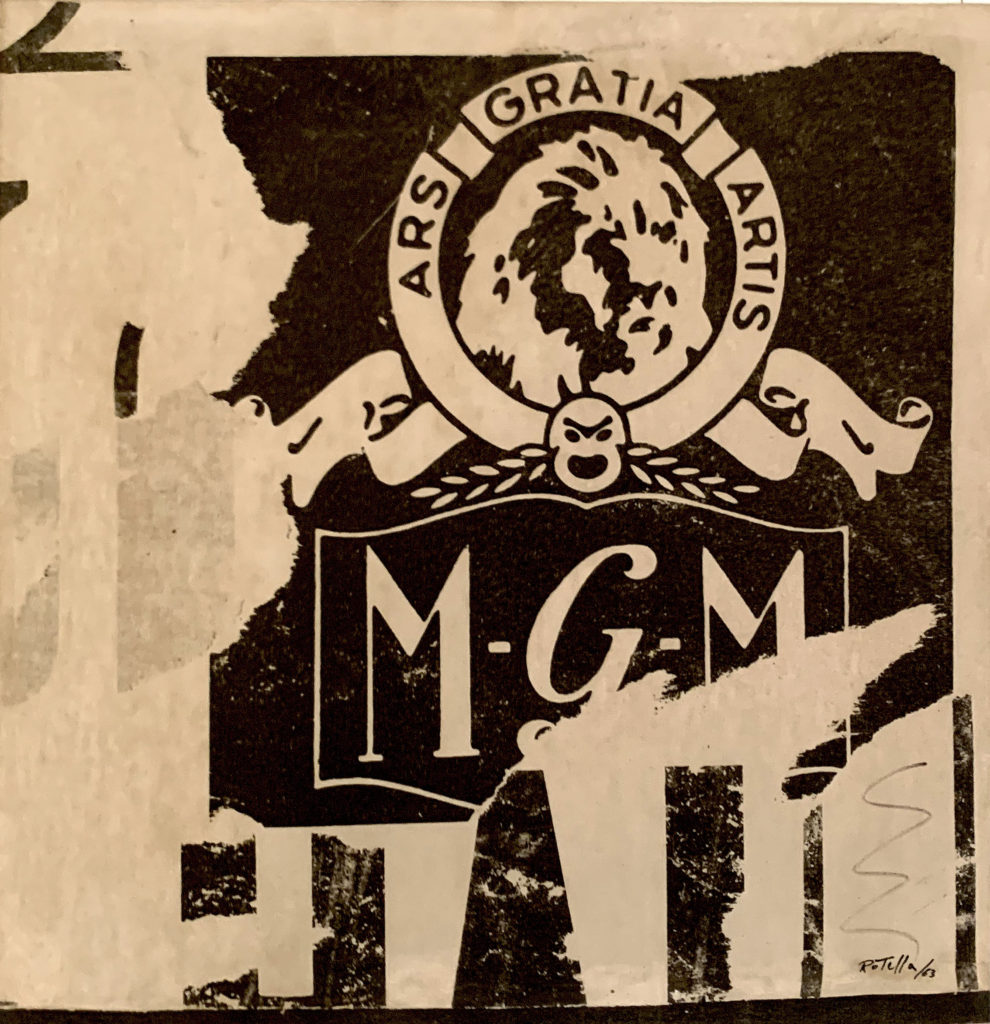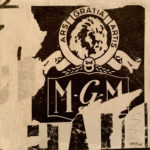Ars-Gratia-Artis
1963
Silkscreen ink on canvas
33 1/8 x 32 in. (84.1 x 81.3cm)
Signed and dated lower right, signed, dated again, titled verso
Ex-collection
The Artist
Collection of Mr. and Mrs. Richard E. Oldenburg, New York, New York. until 2020
Richard Oldenburg was the longtime director of the Museum of Modern Art in New York City he oversaw blockbuster exhibitions of Picasso, Matisse and Cézanne and a transformative expansion that doubled its exhibition space in the 1980s. Mr. Oldenburg older brother was the sculptor Claes Oldenburg.
This work is accompanied by a certificate from the Mimmo Rotella Institute
By 1963, Mimmo Rotella was already familiar with the pictorial and photographic ‘montages’ that characterized the historical avant-garde of the 1920s, Rauschenberg’s artworks that incorporated painting with photography and Warhol’s Pop Art of edited and manipulated silkscreen photograph reproductions. Contrary to photographic manipulation characterized by the use of color and extensive repetition, Rotella’s self-acclaimed process of reportage – also known as photographic reproductions – sought to communicate through photography’s pure informative nature while reducing the artistic interference to a minimum. More specifically, Rotella’s Photographic Reproductions are employed in the two main iconographic nuclei: the socio-political reportages and the portraits. For the socio-political reportages, the images are cropped from magazines and newspapers, and then photographed. According to the composition, one or two negatives would be enlarged and projected on to canvas to be treated with photographic emulsion in order to fix the image. For the portraits, the subject is instead photographed directly by the artist while the projection of the negative and the preparation of the base remain the same. Realising either of the two artistic processes, Rotella formed new images that, despite their alienation from their original context, would still transfer information linked to their political, religious, commercial or promotional designation. With the absence of colours transcending the values of photography’s purely informative communication, Rotella’s refrained gestural participation promotes notions of the dematerialization of art, while reflecting on the iconography and logic of its existence as an experience and as an idea.


 Ars-Gratia-Artis
Ars-Gratia-Artis